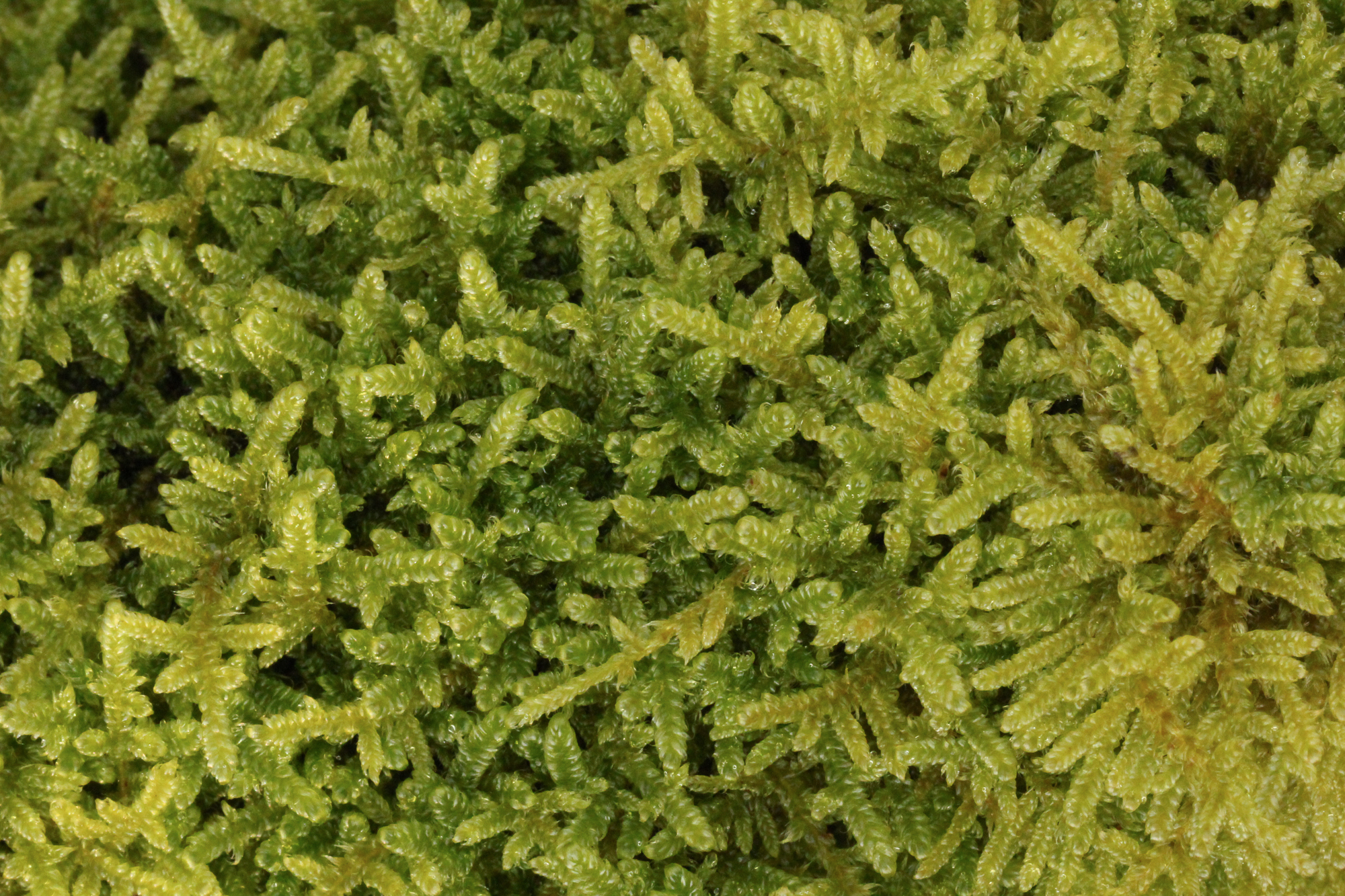Hypnum cupressiforme s.l. (Cypress-leaved plait-moss)
Hypnum cupressiforme often covers entire tree trunks or branches, growing in extensive mats. Its shoots lie flat to the tree and are a mid-green, sometimes tinged brownish and irregularly branched. The leaves are untoothed, lack an obvious nerve, are turned to one side (especially at the shoot tips) and overlap, giving rise to its common name. The shoots look quite smooth and shiny from above. Tree bark supports two varieties of Hypnum cupressiforme and another species, Hypnum andoi, which can often only be told apart by their capsules or by microscopic examination, so when capsules are lacking all three are frequently just recorded as a Hypnum aggregate.
For more information, visit the Hypnum cupressiforme species page.
Isothecium myosuroides (Mouse-tail Moss)
Isothecium myosuroides grows in similar places to Hypnum cupressiforme (often around the base of trees) and resembles it in colour. It can be distinguished by looking closely at the leaves with a hand lens. The leaves of the Hypnum species have no nerve or teeth on the margins whereas Isothecium myosuroides has both. Its leaves are not turned to one side either; sharp-eyed bryologists may also spot dark patches of alar cells at the outer angles of the leaf base.
Closer examination of a patch of Isothecium myosuroides with a hand-lens will show that it is much-branched and quite three-dimensional, forming low-growing patches of densely interwoven stems. Some call its habit ‘sub-dendroid’ as it is supposedly shrubby-looking.
For more information, visit the Isothecium myosuroides species page.
Lewinskya affinis (Wood Bristle-moss)
By far the commonest species of its genus, Lewinskya affinis (Orthotrichum affine) characteristically grows epiphytically as small, loose tufts 1-2cm tall on the bark of a wide range of trees shrubs. It’s very variable and rather nondescript in the vegetative condition. Capsules, often present year-round, are important to identify this moss. They are near-sessile and partially obscured by the leaves around them. When dry they are furrowed and have eight pairs of pale outer peristome teeth. The leaves are unremarkable and like most of the species in this genus, taper to a point.
Lewinskya affinis often grows with Ulota species, and confusion is possible. However, when dry, the leaves of Lewinskya affinis lie more or less pressed against the stem, whereas those of most species of Ulota characteristically curl when dry. The capsules of Ulota species are also held clear of the leaves by an obvious stalk (seta).
For more information, visit the Lewinskya affinis species page.
Cryphaea heteromalla (Lateral Cryphaea)
Cryphaea heteromalla is a distinctive-looking epiphyte found on the bark of many trees and shrubs. Once known it is unmistakable. It has two very different-looking kinds of shoot; the capsule-bearing ones stick out stiffly from creeping, non-fruiting stems which closely adhere to the bark. Each fertile shoot is 1.5 – 2cm long. Leaves are short, nerved and quite closely appressed to the stem. Typically, each fertile shoot produces several near-sessile capsules which are crowded together on the same side of the stem. With a hand lens, it’s possible to see they are partly obscured by the surrounding leaves, which are larger and paler than the stem leaves, and have a long hairpoint.
Cryphaea heteromalla is a pollution-sensitive moss and one that declined considerably in many areas in the twentieth century. Subsequent reduction of airborne sulphur dioxide has encouraged its return to much of the British Isles and it is now common in many areas.
For more information, visit the Cryphaea heteromalla species page.





















